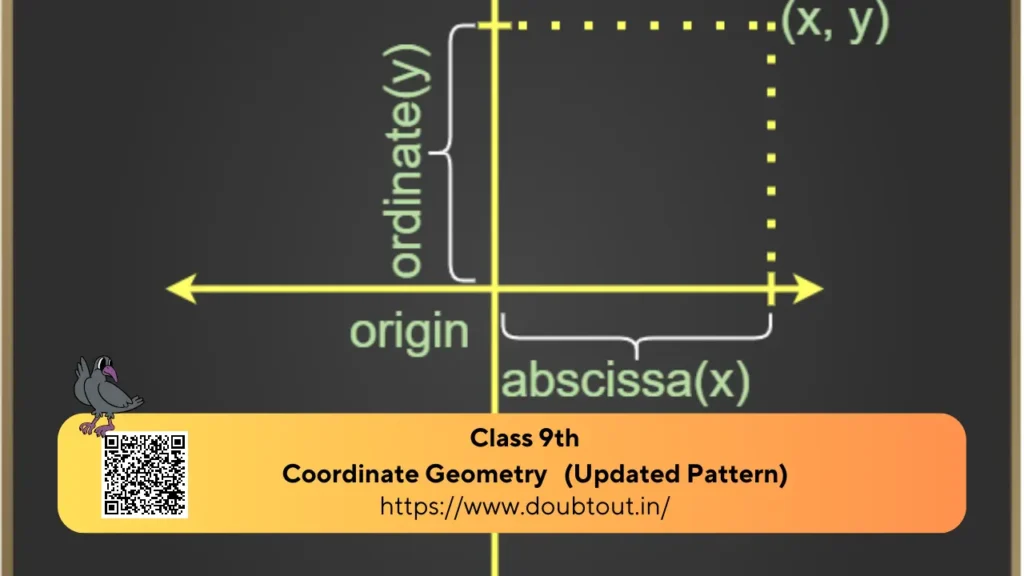
Coordinate geometry is an interesting subject where students learn about the position of an object in a plane, learn about the coordinates or concepts of the cartesian plane, and so on. For example, “imagine a situation where you know only the street number of your friend’s house. Would it be easy for you to find her house, or would it be easier if you had both the house number and the street number?” There are many other situations in which to find a point, we might be required to describe its position with reference to more than one line. Students can learn more about this from Chapter 3 of NCERT Textbooks. And here, we provide them with solutions to all the questions covering this topic in the NCERT Solutions for Class 9 Maths.
NCERT Solutions Class 9 Maths Chapter 2 – Polynomials (Updated Pattern)
Exercise 3.1
1. How will you describe the position of a table lamp on your study table to another person?
Solution:
To describe the position of the table lamp on the study table, we take two lines, a perpendicular and a horizontal line. Considering the table as a plane (x and y axis) and taking perpendicular lines as the Y axis and horizontal as the X axis, respectively, take one corner of the table as the origin, where both X and Y axes intersect each other. Now, the length of the table is the Y-axis, and the breadth is the X-axis. From the origin, join the line to the table lamp and mark a point. The distances of the point from both the X and Y axes should be calculated and then should be written in terms of coordinates.
The distance of the point from the X-axis and the Y-axis is x and y, respectively, so the table lamp will be in (x, y) coordinates.
Here, (x, y) = (15, 25)
2. (Street Plan): A city has two main roads which cross each other at the centre of the city. These two roads are along the North-South direction and East-West direction. All the other streets of the city run parallel to these roads and are 200 m apart. There are 5 streets in each direction. Using 1cm = 200 m, draw a model of the city in your notebook. Represent the roads/streets by single lines.
There are many cross-streets in your model. A particular cross-street is made by two streets, one running in the North-South direction and another in the East-West direction. Each cross street is referred to in the following manner: If the 2nd street running in the North-South direction and 5th in the East-West direction meet at some crossing, then we will call this cross-street (2, 5). Using this convention, find:
(i) how many cross-streets can be referred to as (4, 3)?
(ii) how many cross-streets can be referred to as (3, 4)?
Solution:
- Only one street can be referred to as (4,3) (as clear from the figure).
- Only one street can be referred to as (3,4) (as we see from the figure).
Exercise 3.2
1. Write the answer to each of the following questions.
(i) What is the name of the horizontal and vertical lines drawn to determine the position of any point in the Cartesian plane?
(ii) What is the name of each part of the plane formed by these two lines?
(iii) Write the name of the point where these two lines intersect.
Solution:
(i) The name of horizontal and vertical lines drawn to determine the position of any point in the Cartesian plane is the x-axis and the y-axis, respectively.
(ii) The name of each part of the plane formed by these two lines, the x-axis and the y-axis, is quadrants.
(iii) The point where these two lines intersect is called the origin.
The Secret of Padmasana: Unlocking Meditation and Inner Balance with the Lotus Pose
2. See Fig.3.14, and write the following.
i. The coordinates of B.
ii. The coordinates of C.
iii. The point identified by the coordinates (–3, –5).
iv. The point identified by the coordinates (2, – 4).
v. The abscissa of the point D.
vi. The ordinate of the point H.
vii. The coordinates of the point L.
viii. The coordinates of the point M.
Solution:
i. The coordinates of B are (−5, 2).
ii. The coordinates of C are (5, −5).
iii. The point identified by the coordinates (−3, −5) is E.
iv. The point identified by the coordinates (2, −4) is G.
v. Abscissa means x coordinate of point D. So, abscissa of point D is 6.
vi. Ordinate means y coordinate of point H. So, the ordinate of point H is -3.
vii. The coordinates of point L are (0, 5).
viii. The coordinates of point M are (−3, 0).